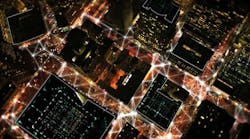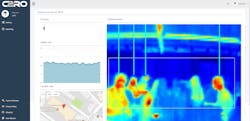C2RO Robotics offers a SaaS platform that uses real-time data processing technologies to enable artificial intelligence software solutions for any sensor/ device/ robot in a fast, secure, scalable, and inexpensive manner. It augments the perception and collaboration capabilities of devices, even those low-cost with limited sensing and computation resources. It was launched in beta in June 2017 and has found new application at the Massachusetts Institute of Technology SENSEable City Lab (SCL).
SCL’s research focuses on predicting how digital technology will change the way we describe, design, and occupy cities. The SCL researchers come from various disciplines including physics, architecture, urban planning, the arts, engineering, and computer science. Interconnected computational elements such as sensors and IoT devices are increasing in the built environment. This allows designers and engineers to design technology that could function as an interface between people and the city.
A recent project at the SCL is aiming to equip the single-purpose streetlight with various types of sensors in order to create a multifunctional digital platform to provide services like pedestrian detection in modern cities. They used C2RO’s cloud platform to implement an experimental sensor data stream. The data stream collects input from thermal cameras, which have high potential for data insights because of their ability to detect pedestrians even in various light and weather conditions, while protecting individual privacy.
Screenshot of the C2RO dashboard for this collaborative project.
The advantage of the C2RO cloud platform is it eliminates the need for on-site processing power. C2RO grants a scalable Software-as-a-Service solution with almost no computation required in the device (sensor) side. In the past, turning thermal data into information on pedestrian traffic has been a challenge because of the processor-intensive task of sensory analysis. By moving the processing power to the cloud, the implementation costs are reduced and makes it easier to expand the commercial uses of the technology. C2RO’s cloud-based platform analyzes image feedback from the distributed thermal cameras to autonomously detect the presence of people. The dashboard displays image feedback in real-time, showing a constant count of humans in the frame and activity over time. These analytics are augmented by machine learning running on the cloud.
“The Internet of Things (IoT) will soon change the way we live and work in the cities. As the number of connected things increases, we would need better ways to process and organize the huge amount of data generated by them,” says Dr. Amin Anjomshoaa, the project lead at MIT. “Cloud-based services such as C2RO’s platform are the perfect counterpart for IoT solutions which facilitate creating elaborated services for smart cities.” Collecting pedestrian traffic data at scale will impact the development of people in the future of smart cities. This is especially true for urban planning professionals, emergency monitoring systems, crowd-control efforts, autonomous vehicles, and disaster relief, where the value of human detection results in in lives saved.
“This application showcased the performance and scalability benefits of the integration with our ready-to-use SaaS platform for any large-scale robotics or sensor-based projects,” says Dr. Soodeh Farokhi, founder and CTO at C2RO. “We enable customers to focus on the unique part of their products, while offloading the computational burden to our scalable and secure cloud solution and saving up to ten times the cost of necessary hardware”.
With increasing demand for a more data-driven understanding of our future world, such urban projects are a major breakthrough in learning more about our diverse and populous metropolitan areas.


